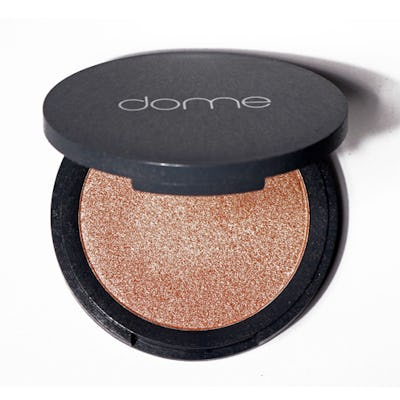10 Under-The-Radar Indie Makeup Brands
Every Beauty Lover Should Own
Our love of indie beauty and makeup brands comes down to more than just supporting “the little guy” in a corporate-dominated landscape. Oftentimes these smaller, self-funded makeup, skin care, and personal care brands provide a glimpse into niche-specific interests and values that are shared by beauty consumers — almost like glimmers of the industry’s future before the mainstream catches on.
Take, for instance, the rise of “clean,” sustainable, and shade-inclusive brands, which are indicative of not only societal movements, but major shifts in the way we shop. Retailers like Credo, The Detox Market, Beauty Beez, and Clean at Sephora are leading this push towards inclusivity and environmental responsibility. And in many ways, indie makeup brands help shape the industry’s future evolution — but their efforts to survive, grow, and thrive face significant challenges.
In a saturated and competitive market, retailer Credo is using its growing platform to support like-minded indie brands. “I would consider the majority of Credo brands to be indie,” says Michelle Connelly, Credo VP of Merchandising and Planning. “They are almost all founder-led, are often newer to market, and have limited retail distribution. They may have taken outside funding to support growth, but the direction and leadership is still coming from the founder and their unique vision.”
She goes on to explain that the different facets of Credo’s business model, like their stringent Clean Standard, recently re-vamped Sustainable Packaging Guidelines, and a Radical Fragrance Transparency Initiative, has allowed the retailer to position and market these brands directly to an interested consumer base, while still being small enough to connect with each brand’s founder, purpose, and story.
“Clean” Beauty
Clean beauty, although a legally unregulated term in the United States, refers to the transparency of what ingredients are used in formulas, and the adherence to using only those that have been proven to pose no adverse health outcomes. Because legal regulations and definitions of the term do not exist (yet) — not to mention experts frequently disagree — brands must identify for themselves what their “clean standards” entail. Credo delineates theirs in The Credo Clean Standard that excludes 2,700 ingredients. For reference, the EU has over 1,300 banned ingredients (which are determined by the EU Cosmetics Regulation) for personal care products. Comparatively, the US has a grand total of 11. Clearly, we have a long way to go.
Sustainable Beauty
There are multiple facets within the eco-friendly category: vegan makeup bypasses emissions-heavy industrial farming; sustainable sourcing speaks to responsible practices in product acquisition; transportation-related emissions due to shipping and travel; and packaging are all major discussions being had in the eco-friendly beauty space. “I definitely see the rise of a lot of innovative categories within packaging — refillable, waterless, and [plastic alternatives],” Connelly notes.
Inclusive Beauty
Beauty inclusivity speaks to a brand’s consideration of who their customer is and who can use their products, especially when it comes to developing shade ranges for things like foundation and concealer. Fenty Beauty set a new industry standard with the 2017 launch of 40, and eventually 50, foundation shades. Multiple makeup brands have since followed suit, with Pür Cosmetics offering their 4-in-1 Love-Your-Selfie Foundation and Concealer range in 100 different shades. Note that truly inclusive shade offerings must also encompass different undertones (i.e., cool, neutral, warm, golden, etc.).
If you’re in the market for a new under-the-radar makeup product to add to your collection, these are 10 brands to keep in mind.






























